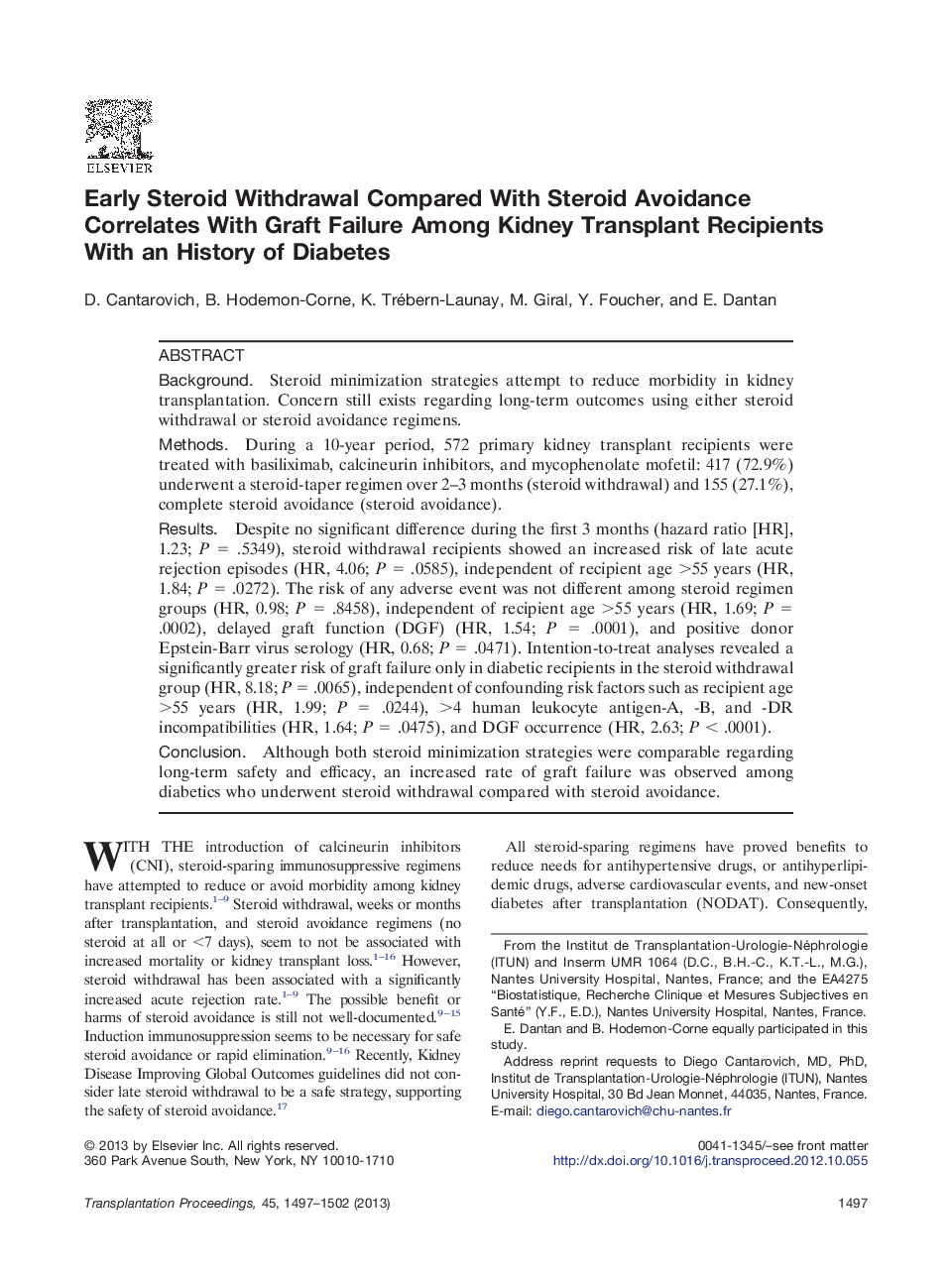| Article ID | Journal | Published Year | Pages | File Type |
|---|---|---|---|---|
| 4257305 | Transplantation Proceedings | 2013 | 6 Pages |
BackgroundSteroid minimization strategies attempt to reduce morbidity in kidney transplantation. Concern still exists regarding long-term outcomes using either steroid withdrawal or steroid avoidance regimens.MethodsDuring a 10-year period, 572 primary kidney transplant recipients were treated with basiliximab, calcineurin inhibitors, and mycophenolate mofetil: 417 (72.9%) underwent a steroid-taper regimen over 2–3 months (steroid withdrawal) and 155 (27.1%), complete steroid avoidance (steroid avoidance).ResultsDespite no significant difference during the first 3 months (hazard ratio [HR], 1.23; P = .5349), steroid withdrawal recipients showed an increased risk of late acute rejection episodes (HR, 4.06; P = .0585), independent of recipient age >55 years (HR, 1.84; P = .0272). The risk of any adverse event was not different among steroid regimen groups (HR, 0.98; P = .8458), independent of recipient age >55 years (HR, 1.69; P = .0002), delayed graft function (DGF) (HR, 1.54; P = .0001), and positive donor Epstein-Barr virus serology (HR, 0.68; P = .0471). Intention-to-treat analyses revealed a significantly greater risk of graft failure only in diabetic recipients in the steroid withdrawal group (HR, 8.18; P = .0065), independent of confounding risk factors such as recipient age >55 years (HR, 1.99; P = .0244), >4 human leukocyte antigen-A, -B, and -DR incompatibilities (HR, 1.64; P = .0475), and DGF occurrence (HR, 2.63; P < .0001).ConclusionAlthough both steroid minimization strategies were comparable regarding long-term safety and efficacy, an increased rate of graft failure was observed among diabetics who underwent steroid withdrawal compared with steroid avoidance.
